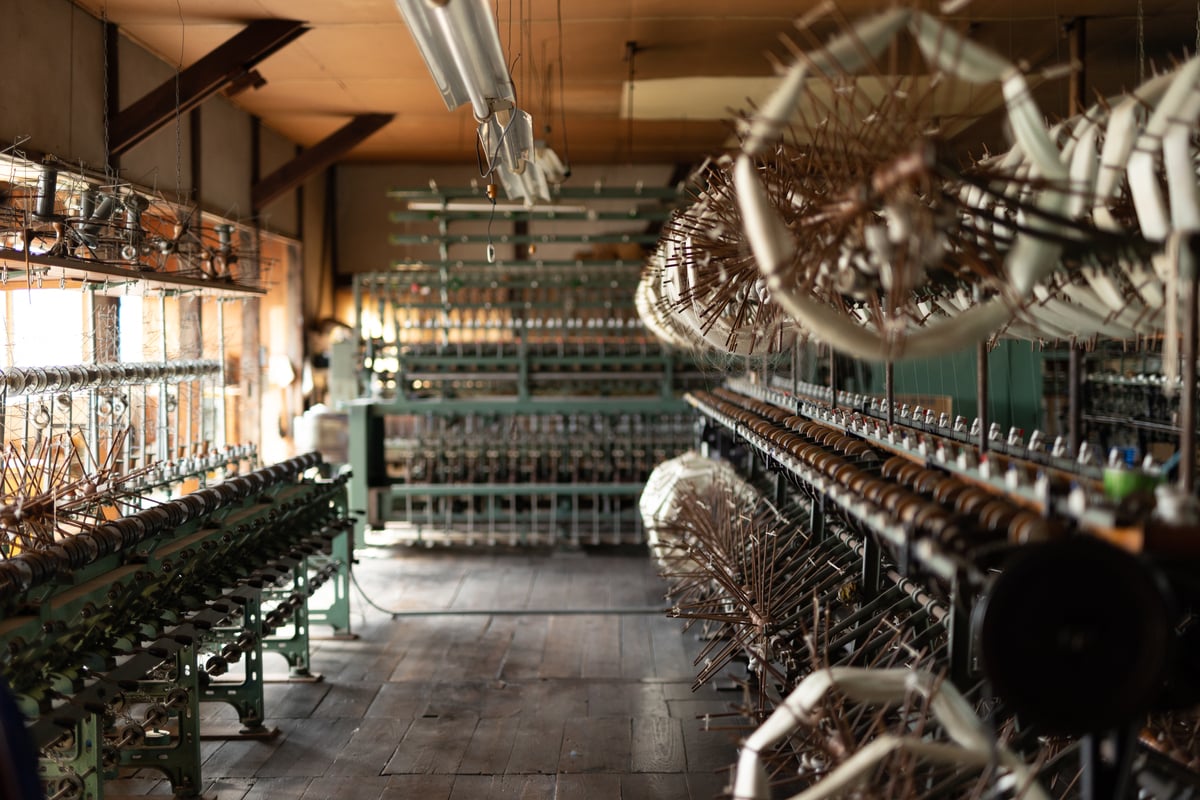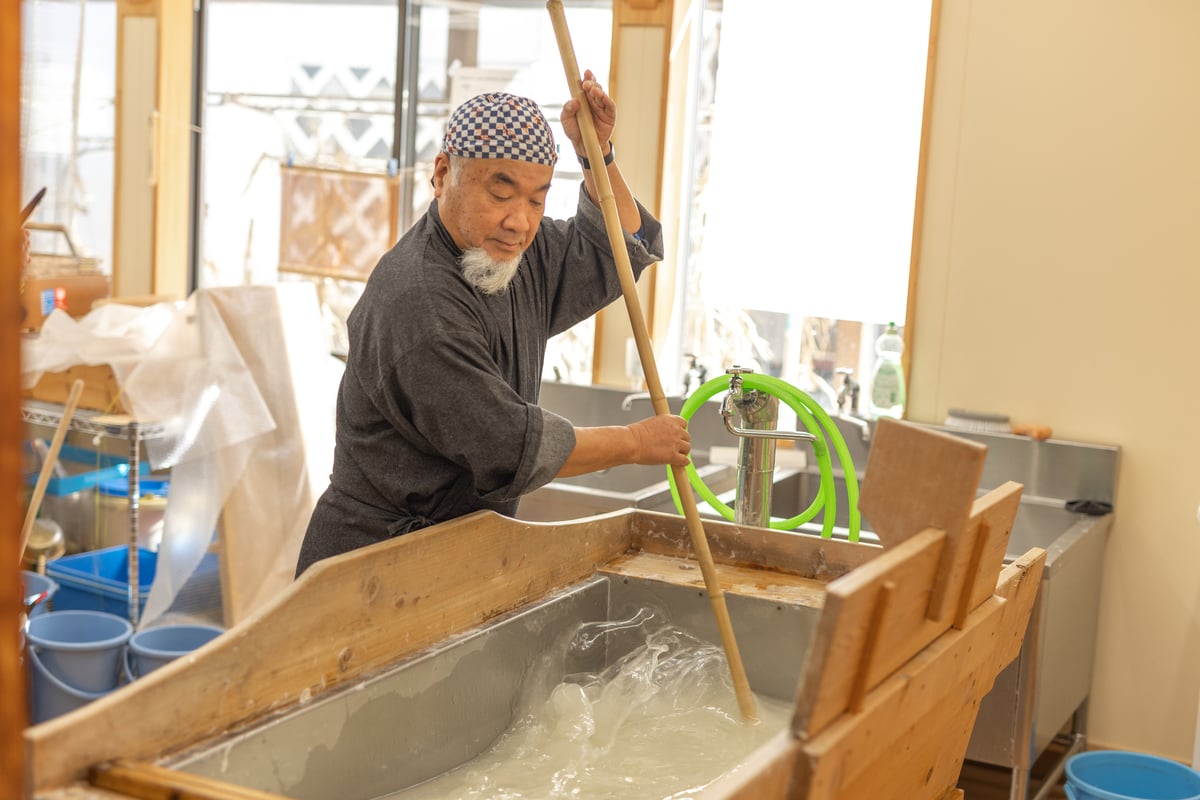
In the area around the old Nakasendo in Nagano Prefecture, also known as Hime Kaido, many traditional crafts born from the handiwork of farmers have been handed down. Among them are Hisakata Washi and Iida Mizuhiki from the Minami Shinshu region.
The history and culture of Japanese paper and mizuhiki, nurtured by geographical features.
The Shimohisakata area in Iida is located in the south of Nagano Prefecture. The production of washi (Japanese paper) flourished among the people in Shimohisakata, partly because of the abundance of clean groundwater, and because of the inland dry climate where it is easy to grow kozo trees, which have strong fibers.
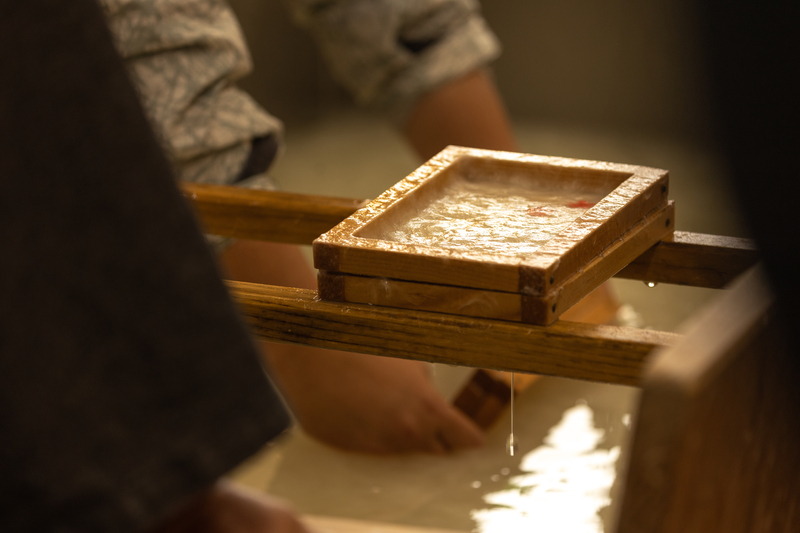
Washi made here has been used in a variety of situations because of its toughness and high practicality. For example, one item made using Shimohisakata's washi paper is called motoyui, which is used to fasten the hair. Shimohisakata's strong and beautiful motoyui became popular all over Japan, and it became popular in the Sumo.
However, in the Meiji period, a decree for cutting hair was enacted, and there was a notice to abolish the traditional Japanese hairstyle chonmage (a traditional Japanese top knot). Along with that, the motoyui culture also declined. Instead, the culture of mizuhiki (Japanese knot tying), which is used for betrothal gifts and decorations, has flourished, making use of the same technique.
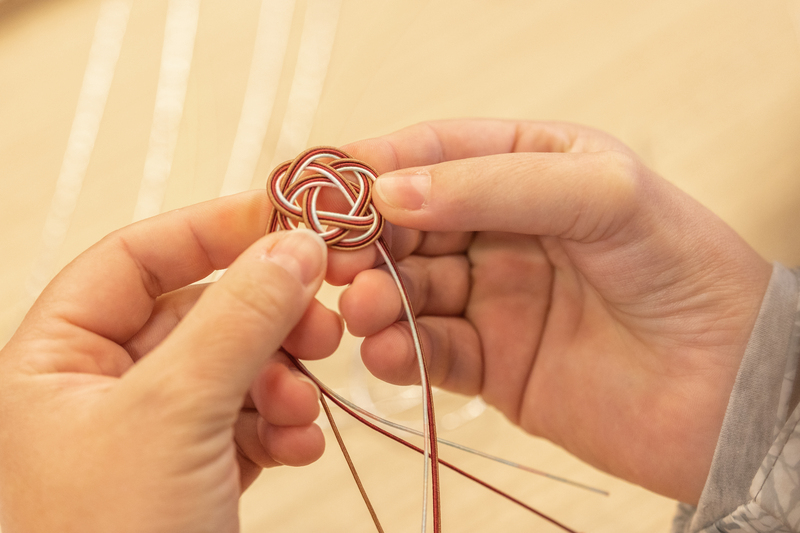
Even in times of hardship, pass on and develop tradition.
In the Meiji period, machine-made Western paper that can be mass-produced at low cost became available causing Shimohisakata's washi to face a period of hardship. At its peak, 223 out of about 300 farmers were producing washi paper in this area. In the 1960s, typhoons wiped out the kozo, the raw material for Japanese paper, and and farmers stopped making washi paper.
Under such circumstances, the “Hisakata Washi Association” was established mainly by farmers who used to make washi paper, saying, “We must not let the traditional culture rooted in this land die out.” They are engaged in a variety of initiatives to pass on the culture of Japanese paper to the next generation, such as cultivating paper mulberry themselves, offering washi-making experiences to tourists from Japan and abroad, and creating opportunities to make elementary school diplomas with washi paper together with children.
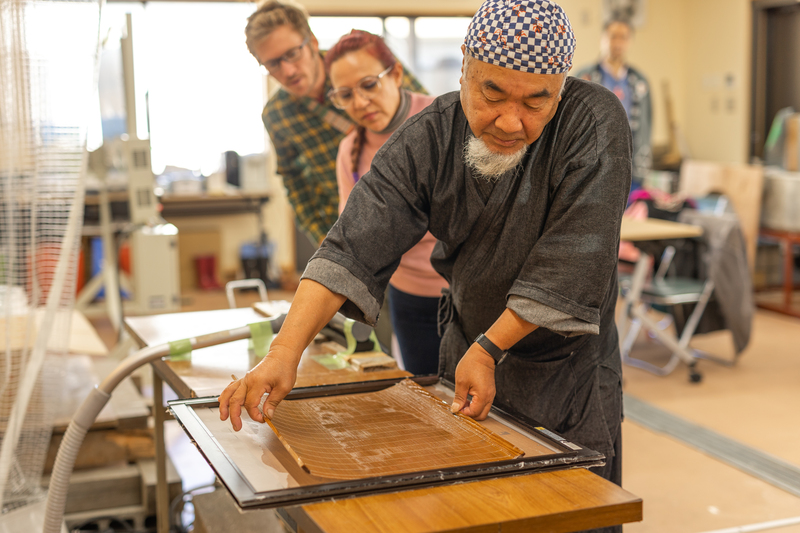
As for mizuhiki, various people have continued to pass on its traditions and techniques. As a result, Iida's mizuhiki, where Shimohisakata area is located, boasts a 70% share of Japan's production. The Sekijima Mizuhiki store plays a role in this traditional industry. They actively hold workshops and promote overseas expansion. In 2019, they won the COOL JAPAN Award.
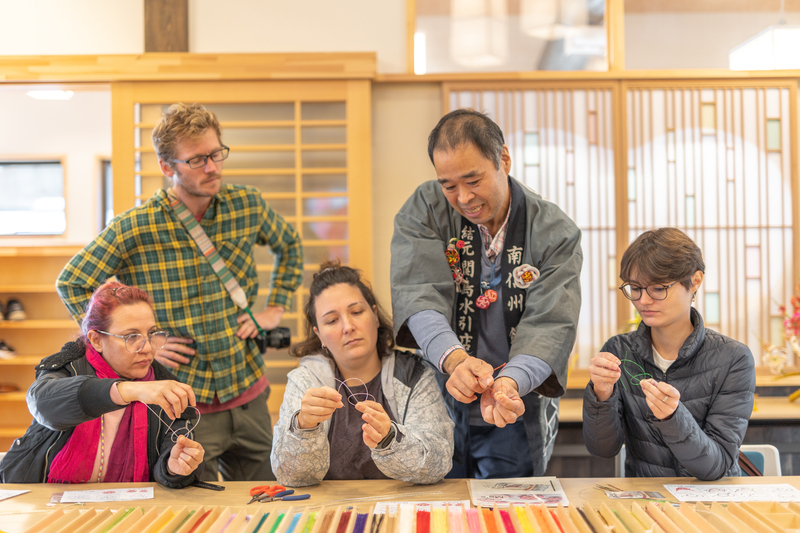
This time, we interviewed Mr. Tatsuya Haba, the secretary general of Hisakata Washi Association, and Mr. Masahiro and Mr. Naoto Sekijima (brothers), of the Sekijima Mizuhiki shop.
Japanese paper, mizuhiki, and those who connect traditions to the future.
The first person we talked to was Tatsuya Haba. He talked about how he got involved in washi-making and the real thrill of it.
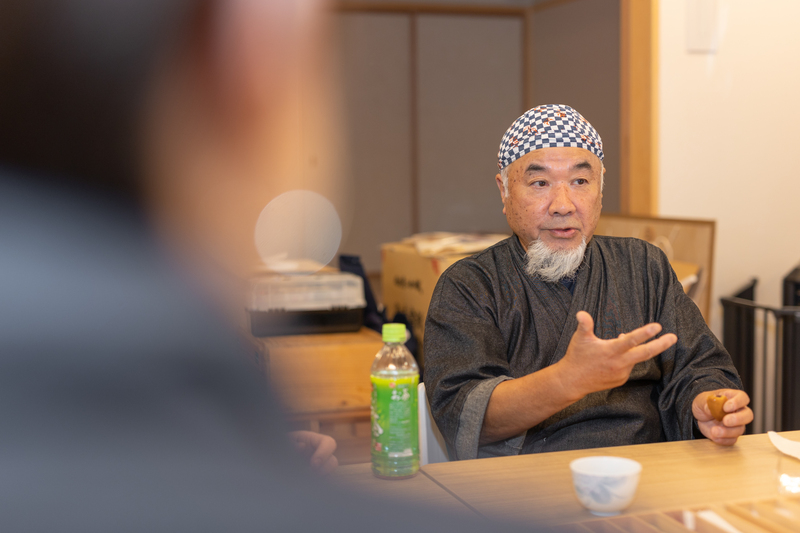
ーーHow did you get involved in washi-making?
Mr. Haba: Originally, I was active as the director of the community center in the Shimohisakata area, and I began to participate in the efforts of the Hisakata Washi Association to preserve local traditions.
Until then, I had never been involved in the making of washi paper, but once I tried it, I found it very interesting and profound. After training in Mino, Gifu, I became a Japanese paper craftsman here in Shimohisakata, Iida.
ーーWhat is the appeal of making Japanese paper?
Mr. Haba: Washi has a slightly different look each time depending on how it is made. It makes me very happy when I can create a nice expression on Japanese paper by making it well. One of the charms of working with washi is that you can encounter the unique texture and warmth of handmade paper.
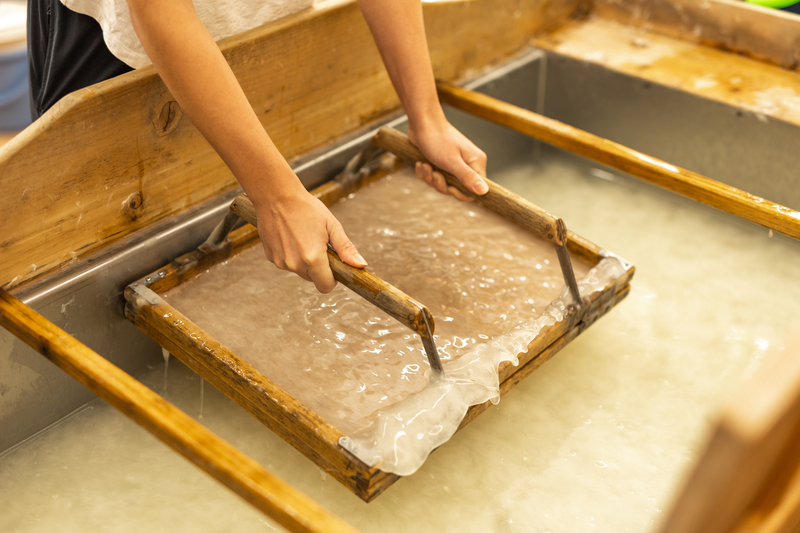
ーーWhat are the difficulties of making Japanese paper?
Mr. Haba: It takes a year to grow a kozo tree, peel the bark, beat it finely, and make Japanese paper. It goes through various processes, but it all starts with the raw material, the kozo tree. Therefore, growing a good kozo tree is very important. In addition to improving my paper-making skills, I believe that I must acquire the wisdom to grow high-quality kozo trees.
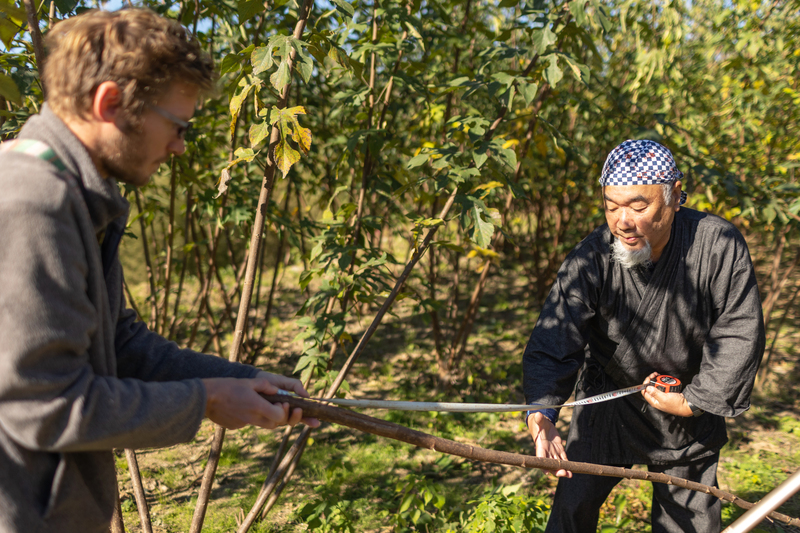
ーーWhat do you see for the future of washi-making?
Mr. Haba: I think Japanese paper and mizuhiki are treasures of Shimohisakata area in Iida. It would be great if we could combine the two activities that have been cultivated as part of the traditional culture of this region to create good products.
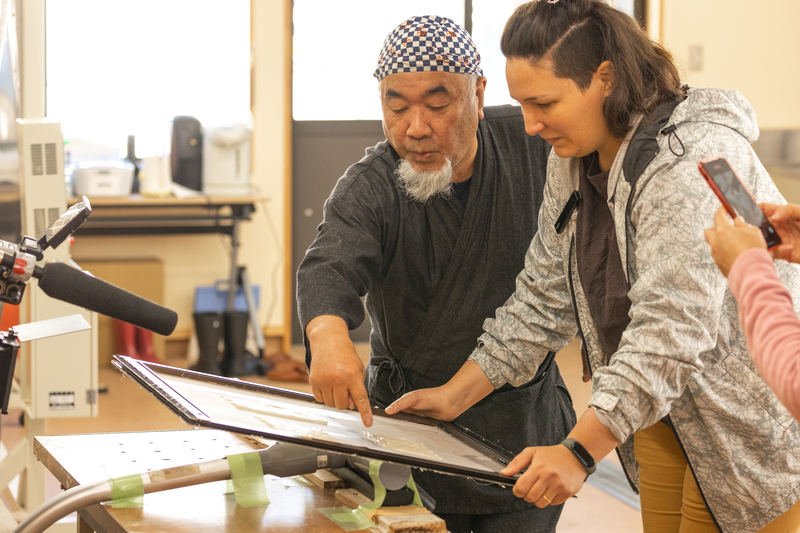
Next, we interviewed the Sekijima brothers of the Sekishima Mizuhiki shop. I asked about the possibilities of mizuhiki.
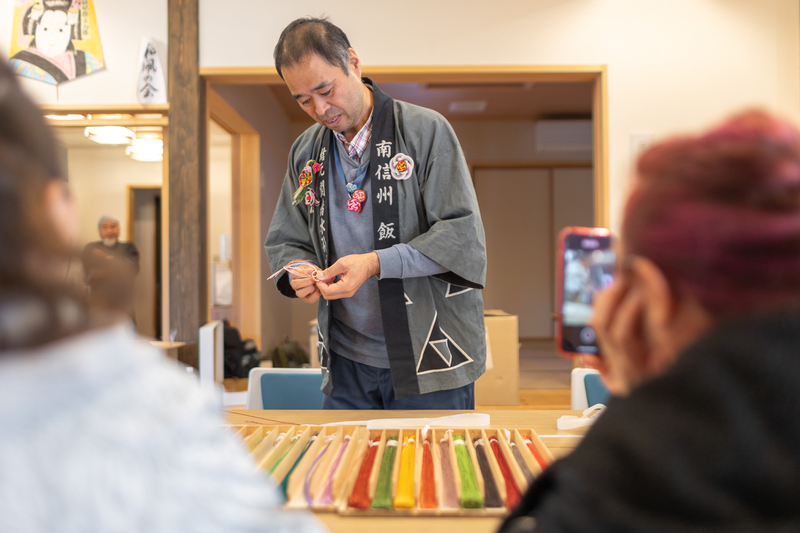
ーーHow did you get involved in mizuhiki?
Mr. Masahiro: Since my father started a mizuhiki shop, I have been living with mizuhiki since I was a child. Therefore, after graduating from high school, it was natural for me to get a mizuhiki-related job.
Mr. Naoto: When I saw my father and brother working seriously, I thought it was cool, and three years after my brother started working, I entered the world of mizuhiki.
ーーWhat is the appeal of mizuhiki?
Mr. Masahiro: Mizuhiki work is not just about making paper knots. It is also about connecting with people. Thanks to my work, I have been blessed with various encounters. Being able to meet a lot of people through mizuhiki is one of my favorite parts about my job.
Mr. Naoto: There are hundreds of different colors of paper cord used to make mizuhiki. So, even with the same shape, if you change the color, you can create many variations. You can actively use your imagination to craft unique products.
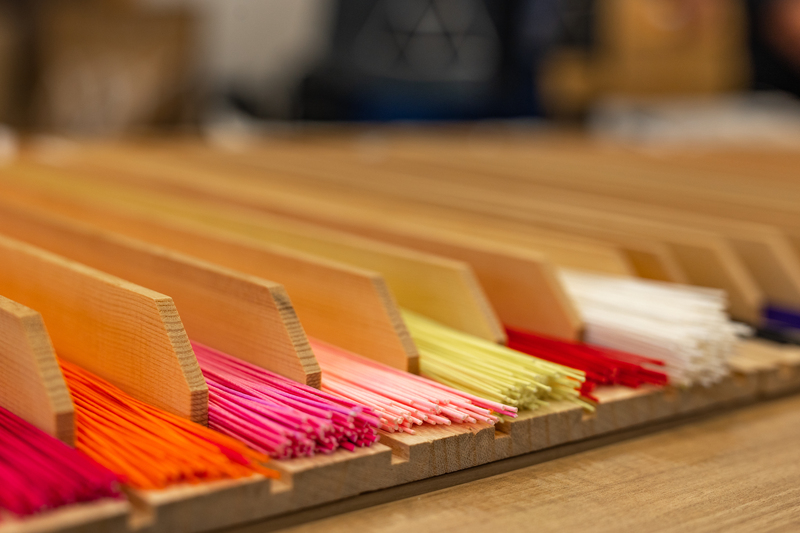
ーーWhat do you think about the possibilities and uses of mizuhiki?
Mr. Masahiro: In Japan, mizuhiki is commonly used for wrapping money at weddings. However, it is an item that can be used not only for such limited situations, but also in everyday life as earrings, on clothing, and for wrapping gifts. We believe that it is our role to open up the possibilities of mizuhiki.
Mr. Naoto In the near future, the Linear Chuo Shinkansen is scheduled to open in the Iida area. In that case, access from metropolitan areas such as Tokyo should be better. If we can take advantage of our geographical feature and provide opportunities to actually see, touch, and experience things, I think the possibilities will expand even further.
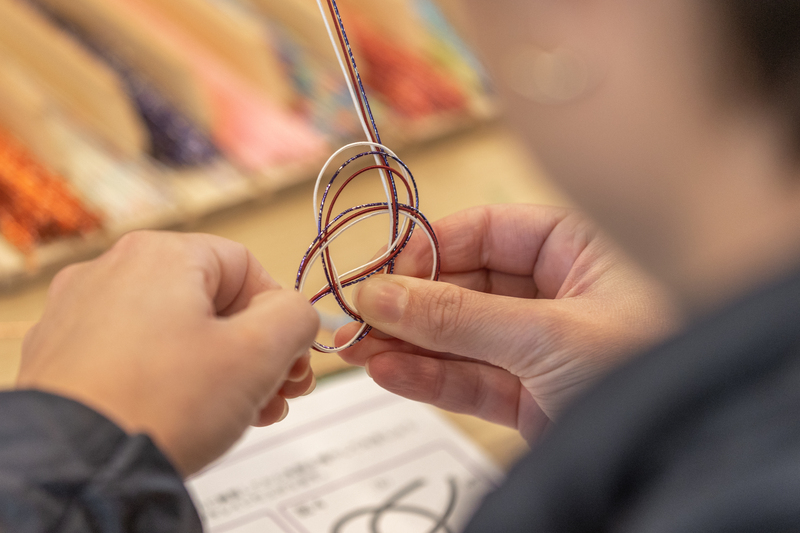
ーーWhat do you see for the future of mizuhiki?
Mr. Masahiro: The mizuhiki industry has been rooted in this area for over 450 years. I would like to pass on the culture that has been handed down uninterruptedly to the future. I would like to share with the world how mizuhiki also connects people.
Mr. Naoto: First of all, I wish I could increase the opportunity to touch and experience mizuhiki firsthand. Choose from hundreds of color variations, combine them, and shape them... I hope more people can enjoy the culture of mizuhiki-making.
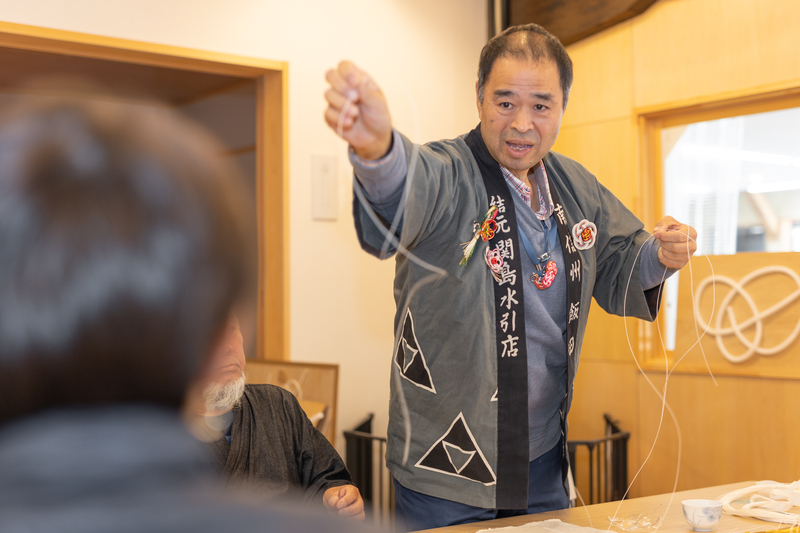
Summary
Japanese paper and mizuhiki are traditional crafts that have been nurtured for over 450 years in Southern Shinshu. Why don’t you come and experience traditional activities if you want to feel the culture unique to this area?


